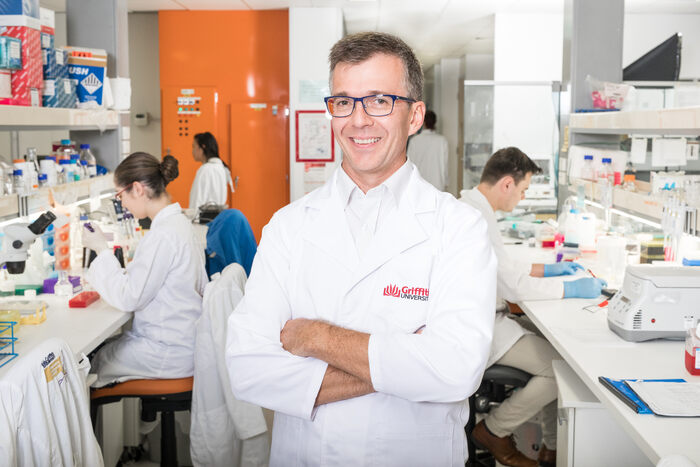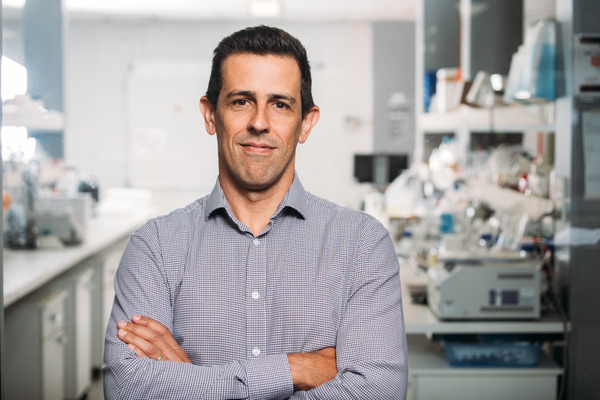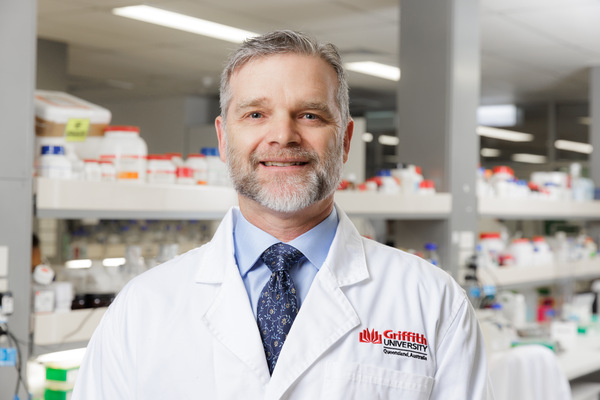The answers to some of society’s most pressing issues might be tiny - living cells that can act as microscopic factories that manufacture biomaterials.
Professor Bernd Rehm and his team at the Centre for Cell Factories and Biopolymers, Griffith Institute for Drug Discovery (GRIDD), Griffith University have developed a novel method to tackle a range of global health and environmental challenges. The team turn living cells into microscopic factories that manufacture biomaterials. These biomaterials have a variety of medical and industrial applications, including as vaccines, therapeutics, diagnostics and as bioremediation agents.
Importantly, this method is low cost, high yielding, easy to scale up and reduces manufacturing hurdles. Using cell factories also allows for a rapid response to both current and emerging disease threats to both humans and animals. For example, the team have developed a biopolymer particle (BP) vaccine technology that can be used to combat emerging variants of the COVID-19 virus. The BP platform facilitates the rapid design and cost-effective large-scale manufacture of room temperature stable vaccines. Two vaccines developed using this technology have been found to induce protective immune responses to COVID-19 in hamsters.
Cells from any living organism can be used as micro-factories, including animals, but the team focus on using microorganisms such as bacteria. Microorganisms are single celled organisms that are able to assemble biomaterials from a range of biological building blocks including biopolymers, proteins, lipids and inorganic materials. Rewiring them can allow for the assembly of a range of functional biomaterials to order.
“I have always been fascinated with how nature can build such complex biological materials and structures such as spider webs, teeth, or soft tissues like a heart. The more we learn about the underlying molecular concepts of how this is achieved, the more we can engineer advanced bio-based materials. This in turn gives us access to a range of high-performance medical materials – it is very exciting to be able to use biology and biological principles in this way,” said Professor Rehm.
Professor Rehm and his team are currently working on vaccines to prevent bacterial and viral infections including meningitis, pneumonia, tuberculosis, Hepatitis C, Dengue fever, streptococcal diseases, Ebola and malaria.
Additionally, the team are also developing diagnostic tools to detect early-stage disease. For example, they bioengineered cell factories that assemble magnetic nanobeads that can help detect ovarian cancer cells. The method is faster, more accurate and less expensive compared to current diagnostic methods.
The team have also turned their method towards combating environmental issues. For example, they built cell factories that assemble beads that bind to cadmium, a hazardous metal that is commonly generated as a by-product of industrial and mining work that adversely impacts water quality and human and animal health. The cadmium-binding beads can be used in bioremediation to remove the contaminate metal.
The above examples of the use of cell factories merely hint at their potential to address global health and environmental issues. They are not only effective, but also low-cost and relatively easy to manufacture. With Professor Rehm and his team keeping such factors front of mind, we are sure to see more important and practical discoveries emerge from their laboratory.
Professor Rehm and his team are open to collaborations with industry and academic groups in the areas of cell factories and biopolymers. To learn more about Professor Rehm’s research and his contact details:
We are very grateful for any individual or corporate donations and bequests to help us take our research forward. To contribute to GRIDD’s ground-breaking research please find more information here:
Through the GRIDD Director’s Circle you can also help provide career and personal development opportunities for GRIDD’s students and early career researchers.
To keep up to date with developments at GRIDD:
Banner image by Dr Benjamin Evert entitled ‘Cell Factories’ – a bioreactor containing a high-density culture of E. coli which have been genetically engineered to express a potential new vaccine.
Sustainable Development Goals
Griffith University is aligned with the United Nation’s Sustainable Development Goals (SDGs) and is committed to advancing knowledge, innovation, and practices that promote holistic health and well-being.















